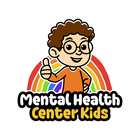|
Key Takeaways:
- Disruptive behavior disorders manifest as aggression and violence towards others. The different types include oppositional defiant disorder and conduct disorder.
- Biological and environmental factors like family medical history and an abusive household can cause disruptive behavior disorders.
- Psychiatrists and psychologists treat disruptive behavior disorders through talk therapy and medication.
|
Disruptive behavior disorders (DBD) in children can cause them to struggle with impulsivity, aggression, and emotional regulation. While it can be frustrating for parents and teachers to deal with, early intervention can help children develop the right social and conflict resolution skills.
In this article, you’ll learn practical techniques for helping your child with DBD thrive. From teaching problem-solving skills to getting professional help, these strategies can help you develop a supportive environment that fosters positive growth.
What are Disruptive Behavior Disorders?
Disruptive behavior disorders (DBDs) are characterized by children “acting out.” They might be indifferent to rules or openly hostile to their peers and family. Children with DBDs might also have temper tantrums, excessively argue, or become physically aggressive with others.
Types of Disruptive Behavior Disorders
DBDs manifest differently—in severity and symptoms. Below are the common types of disruptive behavior disorders:
-
Oppositional Defiant Disorder (ODD): ODD exhibits anger episodes, hostile behavior, and intolerance of authority. As the word “oppositional” suggests, children with ODD openly oppose rules and norms.
-
Conduct disorder: Conduct disorder involves significant aggression against people and animals. Children with this condition may also destroy property, steal and lie, and run away from home.
-
Intermittent explosive disorder: This impulse-control disorder manifests as the inability to control aggressive impulses like temper tantrums and verbal arguments [*].
Signs of Disruptive Behavior Disorders in Children
Symptoms of disruptive behavior disorders in children vary according to the specific condition. However, common signs include the following:
- Quickly losing temper
- Frequently arguing with others
- Refusing to follow rules
- Lying often and without remorse
- Impulsively engaging in risky and illegal behaviors
- Feeling resentful and hostile toward others, especially when they receive criticism
- Physically hurting other people and animals
- Starting fires
- Destroying property
What Causes Disruptive Behavior Disorders in Children?
While there is no exact cause of DBDs, children may be more likely to develop them as a result of the following biological factors [*]:
Environmental factors include the following:
- Separation from parents or rejection from mother as an infant
- Physical, emotional, and/or sexual abuse
- Receiving ineffective discipline
- Low socioeconomic upbringing
- Lacking adequate parental supervision
How are Disruptive Behavior Disorders Diagnosed in Children?
For a healthcare specialist to diagnose DBD, they must consider two significant factors:
- Whether the child’s behavior is severe enough to be considered “out of the ordinary”
- Identifying what disruptive, impulse-control disorder the child actually has
Children must also display at least three of the following symptoms within a 12-month period:
- Showing aggression toward others
- Destroying or stealing property
- Lying and being deceitful
- Significantly violating school or house rules
During the assessment, a healthcare provider will also interview the parents and ask for a comprehensive overview of the child’s behavioral and medical history.
How are Disruptive Behavior Disorders Treated in Children?
Once a child psychiatrist diagnoses your child with a specific disruptive behavior disorder, you can start working on a mutually agreed-upon treatment plan. Most DBD treatments consider a two-step approach of talk therapy and medication.
Cognitive Behavioral Therapy
Cognitive behavioral therapy (CBT) is the primary treatment for DBD and takes a goal-oriented approach [*]. It emphasizes the role of thoughts and how they affect a child’s behavior and implements the CBT triangle to illustrate how a child’s thoughts, feelings, and behaviors are interconnected.
Through this triangle, therapists can help children understand what negative thought patterns influence their behavior and how they can modify their thinking to manage their actions.
CBT therapists focus on reframing negative thoughts that might contribute to violent or aggressive reactions. They also implement behavior modification techniques, such as rewarding kids for good behavior through token systems, privilege-based rewards, or verbal praise.
CBT also includes skills training in anger management, communication, and problem-solving. These skills training activities include deep breathing for calmness, step-by-step conflict resolution, and distraction techniques for anger.
Medications
Besides therapy, your therapist may also medicate your child. For severe aggression, your psychiatrist might prescribe atypical antipsychotics like risperidone or aripiprazole [*]. These medications reduce explosive outbursts and help control severe impulsivity.
If your child experiences frequent mood swings, your psychiatrist might prescribe mood stabilizers like lithium or valproic acid [*].
Sometimes, children with DBDs have co-occurring ADHD and may be prescribed stimulant medications like ritalin, concerta, or Focalin to improve attention span and impulse control.
What is the Outlook for Disruptive Behavior Disorders in Children?
The outlook for disruptive behavior disorders in children depends on how early you intervene. With a robust support system, the right medication, and regular therapy, children have a relatively good outlook and can become stable and productive in the future.
Leaving DBDs untreated can lead to substance use, legal issues, and difficulties with interpersonal relationships.
Can Disruptive Behavior Disorders Be Prevented in Children?
While there is no known method of preventing DBDs in children, support can go a long way in their recovery and management. The best thing you can do for your child is seek professional help as early as possible and learn positive parenting strategies to approach your child with love and compassion.
Supporting a Child with Disruptive Behavior Disorders
It can be challenging and frustrating for a parent to manage a DBD in their child. However, perseverance, patience, and determination can help you become the support system they need. Here’s what you can do:
-
Try parenting modification: If your child isn’t responding to your methods of intervention and discipline, consider modifying your approach. Learn how to anticipate certain behaviors and implement a consistent routine for your child.
-
Build on your child’s social-emotional skills: A DBD can make it difficult for your child to make and maintain friends. Focusing on improving their social-emotional skills can make them better communicators and help them sustain long-lasting relationships. Help them identify and manage their emotions with a feelings list or teach them to make better decisions based on thinking.
-
Work with your child’s teachers: Having a DBD can make it difficult for a child to stay focused in school. Working closely with their teachers can give you context into their progress and, together, you can work on an individualized education plan (IEP).
-
Prioritize problem-solving skills: Children with DBD often struggle handling conflict. Guide them through the process by teaching them to identify the problem, consider the possible solutions, and think of the consequences of each choice.
The Bottom Line
Supporting a child with disruptive behavior disorder requires patience, consistency, and determination. While you may encounter many challenges, establishing clear expectations, teaching emotional regulation skills, and fostering a structured environment can enhance their progress.
Provide your child with even more ways to work through their frustration and aggression with our anger management worksheets.
Sources:
- Radwan K, Coccaro EF. “Comorbidity of disruptive behavior disorders and intermittent explosive disorder.” Child and Adolescent Psychiatry and Mental Health, 2020.
- Fairchild G, Hawes DJ, Frick PJ, et al. “Conduct disorder.” Nature Reviews Disease Primers, 2019.
- McCart M. “Evidence-Based Psychosocial Treatments for Adolescents With Disruptive Behavior.” Journal of Clinical Child & Adolescent Psychology, 2016.
- Hasanpour-Dehkordi A, Safavi P, AmirAhmadi M. “Comparison of risperidone and aripiprazole in the treatment of preschool children with disruptive behavior disorder and attention deficit-hyperactivity disorder: A randomized clinical trial.” Journal of Advanced Pharmaceutical Technology and Research, 2016.
- Gurnani T, Ivanov I, Newcorn JH. “Pharmacotherapy of Aggression in Child and Adolescent Psychiatric Disorders.” Journal of Child and Adolescent Psychopharmacology, 2016.





















































